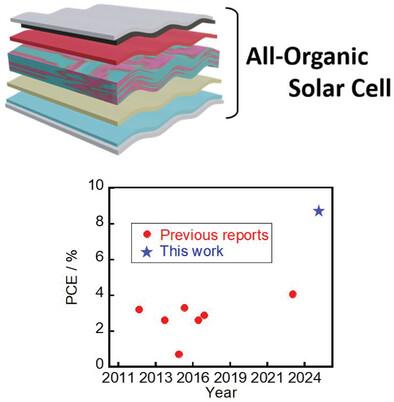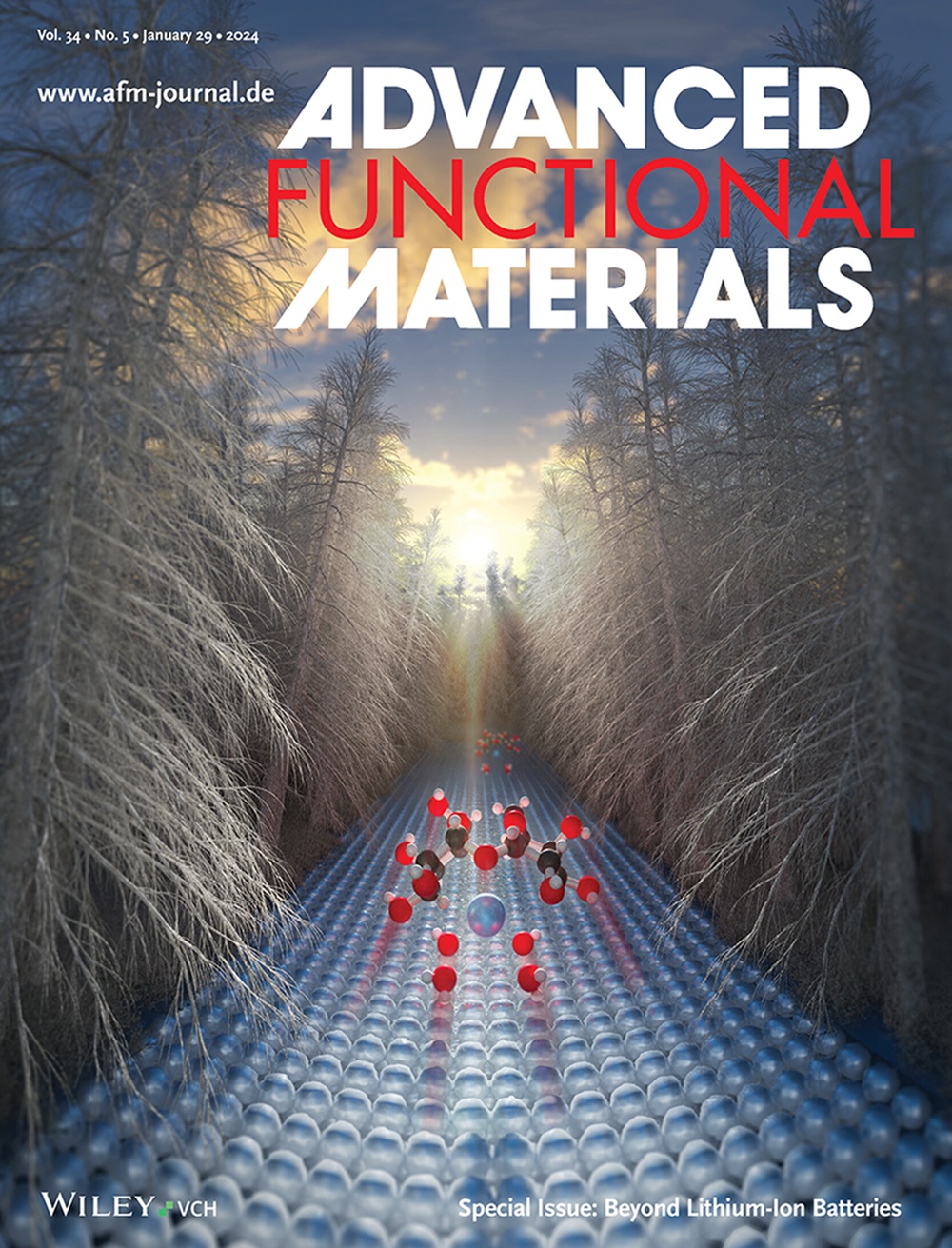Unlocking High-Performance in All-Organic Solar Cells by the Development of Organic Electrodes with No Acid and High-Temperature Treatment and the Effective Preparation Thereof on Organic Multilayer Films
IF 18.5
1区 材料科学
Q1 CHEMISTRY, MULTIDISCIPLINARY
引用次数: 0
Abstract
Solar panels are difficult to dispose of and environmentally unfriendly because they contain potentially hazardous compounds and materials that are difficult to dispose of or recycle. As such, all-organic solar cells (AOSCs), which comprise only organic materials, have received considerable attention as environmentally friendly alternatives. Although the use of AOSCs will resolve the issue of solar cell disposal, the production of high-performance AOSCs remains a challenge (power conversion efficiency (PCE) currently ≈4%) because organic electrodes exhibit limited conductivity and are difficult to fabricate without damaging organic plastic substrates and multilayered organic semiconducting materials. Herein the development of AOSCs is reported with PCEs more than twice those of previously reported AOSCs on PET substrates (8.7%). The key to achieving this is the development of organic electrodes with high conductivity and which require no acid doping or high-temperature heating, thus avoiding damage to the plastic substrates. Moreover, the top-electrode lamination method developed herein, which does not damage the bottom organic layers of AOSCs, also contributes to the production of high-performance AOSCs. In addition, the use of bioplastic substrates is explored to demonstrate the feasibility of producing environmentally friendly solar cells with good photovoltaic performance (PCE: 8.6%), thus suggesting that the electrodes and lamination method developed are effective for producing high-performance AOSCs.

求助全文
约1分钟内获得全文
求助全文
来源期刊

Advanced Functional Materials
工程技术-材料科学:综合
CiteScore
29.50
自引率
4.20%
发文量
2086
审稿时长
2.1 months
期刊介绍:
Firmly established as a top-tier materials science journal, Advanced Functional Materials reports breakthrough research in all aspects of materials science, including nanotechnology, chemistry, physics, and biology every week.
Advanced Functional Materials is known for its rapid and fair peer review, quality content, and high impact, making it the first choice of the international materials science community.
 求助内容:
求助内容: 应助结果提醒方式:
应助结果提醒方式:


